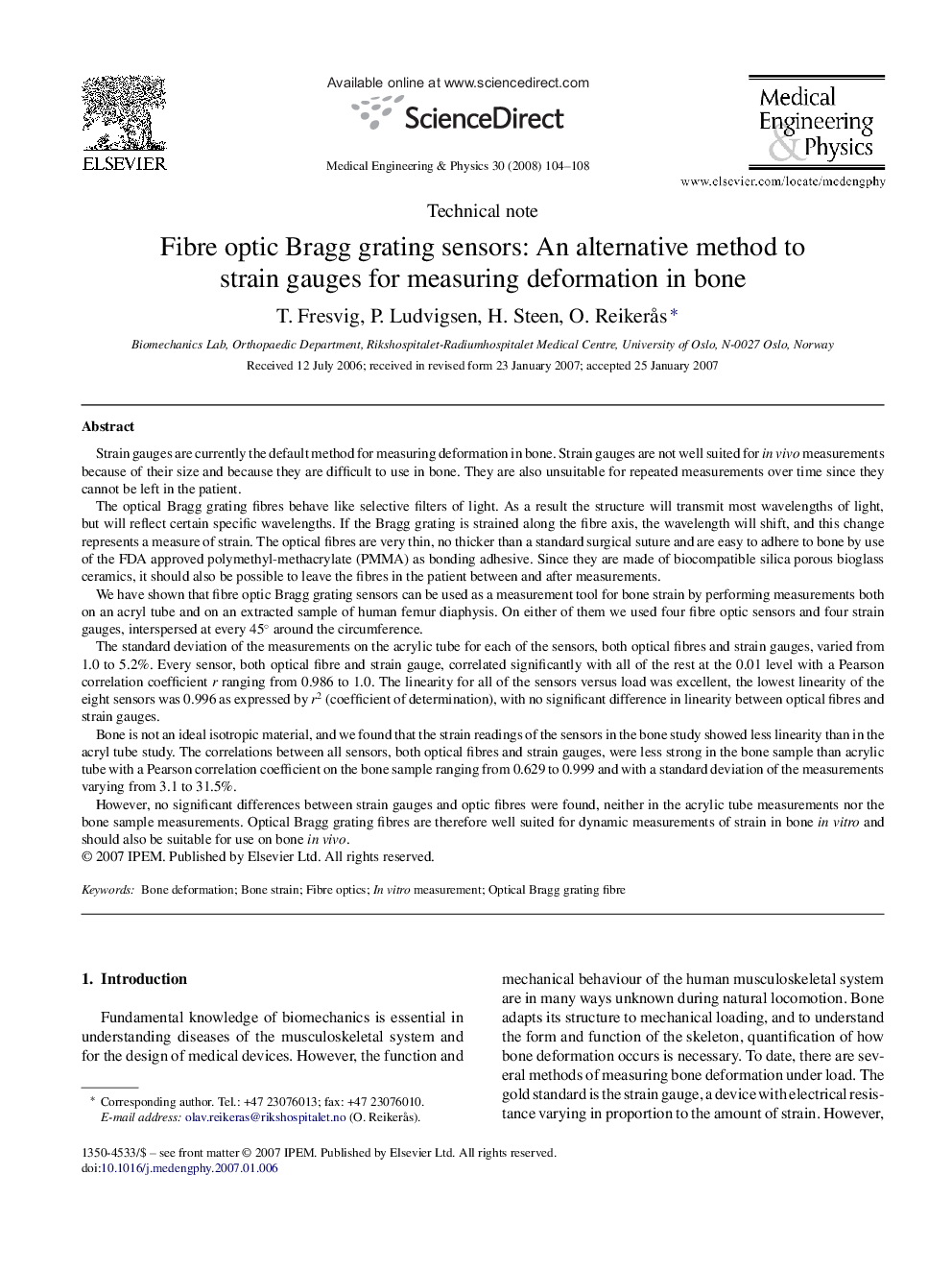| کد مقاله | کد نشریه | سال انتشار | مقاله انگلیسی | نسخه تمام متن |
|---|---|---|---|---|
| 876626 | 910854 | 2008 | 5 صفحه PDF | دانلود رایگان |

Strain gauges are currently the default method for measuring deformation in bone. Strain gauges are not well suited for in vivo measurements because of their size and because they are difficult to use in bone. They are also unsuitable for repeated measurements over time since they cannot be left in the patient.The optical Bragg grating fibres behave like selective filters of light. As a result the structure will transmit most wavelengths of light, but will reflect certain specific wavelengths. If the Bragg grating is strained along the fibre axis, the wavelength will shift, and this change represents a measure of strain. The optical fibres are very thin, no thicker than a standard surgical suture and are easy to adhere to bone by use of the FDA approved polymethyl-methacrylate (PMMA) as bonding adhesive. Since they are made of biocompatible silica porous bioglass ceramics, it should also be possible to leave the fibres in the patient between and after measurements.We have shown that fibre optic Bragg grating sensors can be used as a measurement tool for bone strain by performing measurements both on an acryl tube and on an extracted sample of human femur diaphysis. On either of them we used four fibre optic sensors and four strain gauges, interspersed at every 45° around the circumference.The standard deviation of the measurements on the acrylic tube for each of the sensors, both optical fibres and strain gauges, varied from 1.0 to 5.2%. Every sensor, both optical fibre and strain gauge, correlated significantly with all of the rest at the 0.01 level with a Pearson correlation coefficient r ranging from 0.986 to 1.0. The linearity for all of the sensors versus load was excellent, the lowest linearity of the eight sensors was 0.996 as expressed by r2 (coefficient of determination), with no significant difference in linearity between optical fibres and strain gauges.Bone is not an ideal isotropic material, and we found that the strain readings of the sensors in the bone study showed less linearity than in the acryl tube study. The correlations between all sensors, both optical fibres and strain gauges, were less strong in the bone sample than acrylic tube with a Pearson correlation coefficient on the bone sample ranging from 0.629 to 0.999 and with a standard deviation of the measurements varying from 3.1 to 31.5%.However, no significant differences between strain gauges and optic fibres were found, neither in the acrylic tube measurements nor the bone sample measurements. Optical Bragg grating fibres are therefore well suited for dynamic measurements of strain in bone in vitro and should also be suitable for use on bone in vivo.
Journal: Medical Engineering & Physics - Volume 30, Issue 1, January 2008, Pages 104–108